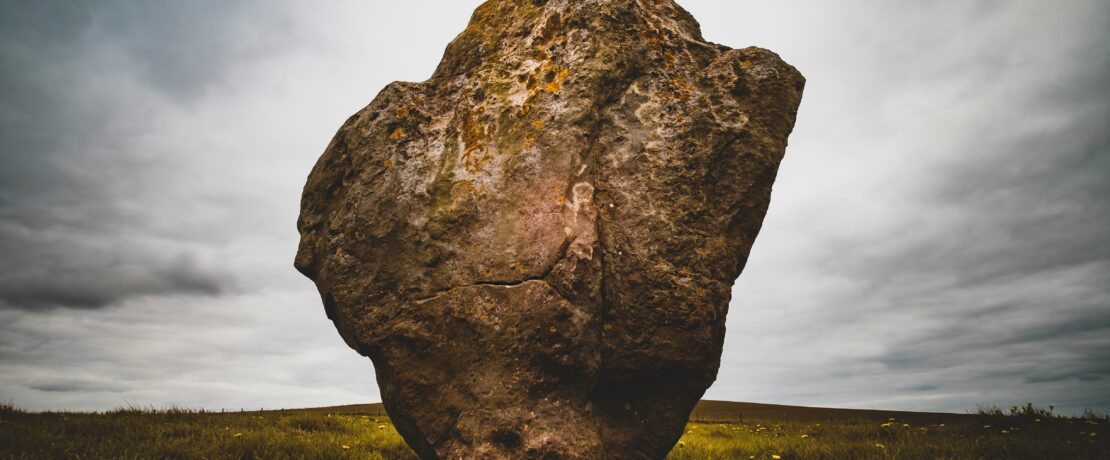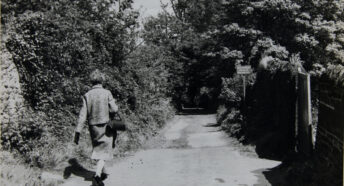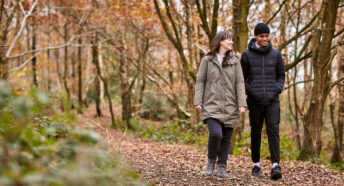Seven stone circles that aren’t Stonehenge
Stonehenge is the iconic stone circle you see on postcards and posters. But our countryside is speckled with more of these mysterious spiritual sites. Explore our list of lesser-known stone circles in the countryside near you.
Every year, thousands of people gather at Stonehenge to mark our yearly equinoxes and solstices. Our prehistoric ancestors shaped and aligned the stones to frame both the midwinter sunset and midsummer sunrise.
But if a quieter stone circle experience appeals, why not explore a less well-known one? There are hundreds of others across England.
Here are seven you can visit around the country to mark the spring equinox – and enjoy a bit of a walk and some fantastic views too – especially as the weather warms this spring.
1. Castlerigg Stone Circle, Cumbria
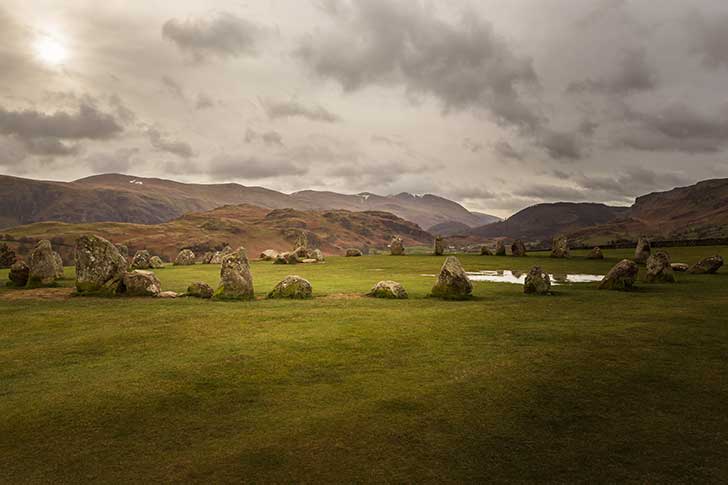
For its setting alone, this one is hard to beat. It lies on a small plateau ringed by Lake District mountains, including Skiddaw, Blencathra and High Seat.
But it’s also one of the oldest stone circles in the country, probably built about 5,000 years ago. The ‘circle’ (actually an oval, if we’re nitpicking) has 38 large stones, although there were once 42.
Like other Neolithic (late Stone Age) circles, Castlerigg has an outlying stone to the south west: it’s no longer in its original position, but some people think that such outliers would have been aligned with planets or stars.
Directions: Find the circle 1½ miles east of Keswick (walking from the centre of Keswick to the stones takes about 30 minutes). Limited parking close by. See the Stagecoach website for details of bus services.
2. Avebury Henge and Stone Circles, Wiltshire
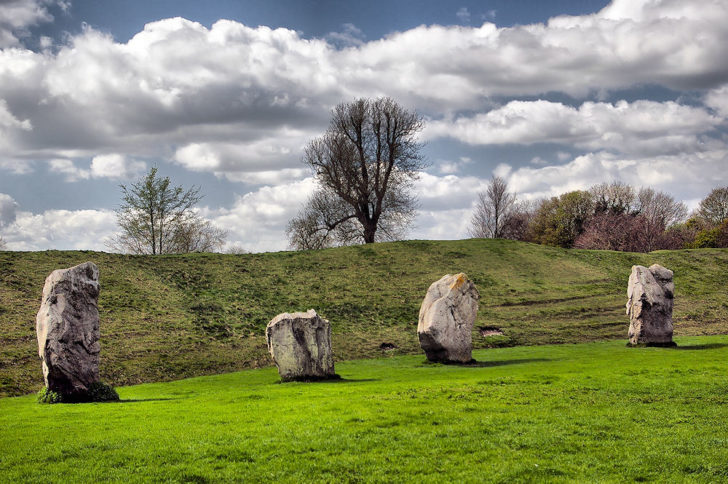
The henge here – a huge circular bank and ditch – is so vast it actually includes part of Avebury village! Also within the henge is the largest stone circle in Britain, over 300 metres across, and originally of about 100 stones. And sitting inside that are two smaller circles.
That’s not all, though. This is part of an extraordinary prehistoric landscape with a number of other monuments close by, including the mysterious Silbury Hill. It’s a fantastic area to explore on a network of footpaths and bridleways – the National Trust website has some suggested walks.
Directions: parking in National Trust car park, south of Avebury off A4361. Check the Stagecoach website for bus services.
3. Stanton Drew Stone Circles and Cove, Somerset
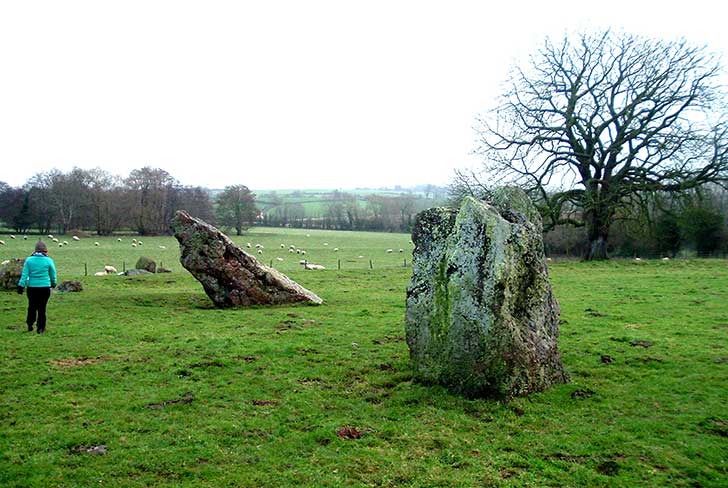
There are actually three stone circles here, one large and two small, all probably built about 4,500 years ago.
The biggest, at 113m across, is the second-largest in England after Avebury. A mysterious little ‘cove’ of three stones huddled together like conspirators stands close by (in the garden of the village pub, handily). Recent investigations suggest that this is all part of what was once an elaborate and important ritual site.
Legends relating to stone circles abound, usually involving people being turned to stone for their misdeeds, and Stanton Drew has attracted more than its fair share of folklore. The best-known tale is that the stones in the Great Circle are the remains of a wedding party tricked by a fiddle-playing devil into dancing on a Sunday – and petrified for their crime.
Directions: there is limited free parking at the entrance to the stones field, and further free parking by the Druid’s Arms. Several buses serve the village (see English Heritage website for details).
4. The Hurlers, Cornwall
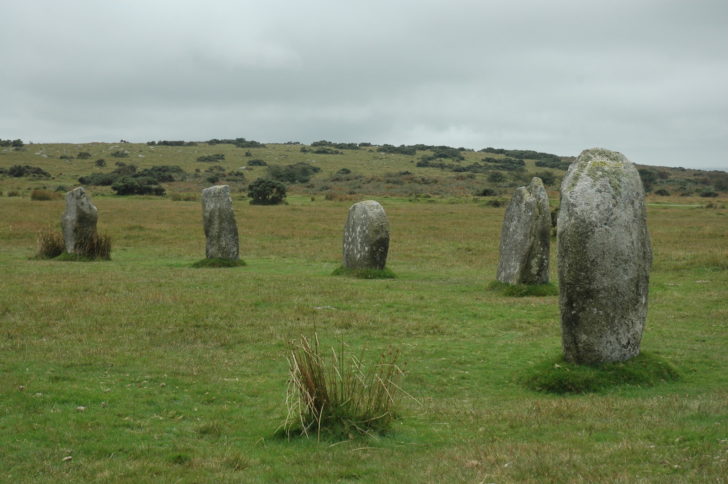
On the granite uplands of Bodmin Moor, close to the village of Minions, stands this line of three fine early Bronze Age stone circles. Such a grouping is unique in England, and the Hurlers are reckoned to be the best ceremonial circles in the south west.
The trio of circles are part of a large scattering of prehistoric monuments on this part of the moor and are directly aligned with some of these, suggesting that the Hurlers may have been part of an important processional route. For instance, the axis through the centres of the two northern circles lines up with the huge Rillaton Barrow – a Bronze Age burial chamber – to the north east.
Local legend has it that The Hurlers are men who were turned to stone for playing the ancient game of hurling on a Sunday.
Directions: there is free parking (signposted) ¼ mile walk away on the south-west side of Minions. The walk takes you across uneven ground, heading towards the dramatic tor, Cheesewring.
5. Mitchell’s Fold Stone Circle, Shropshire
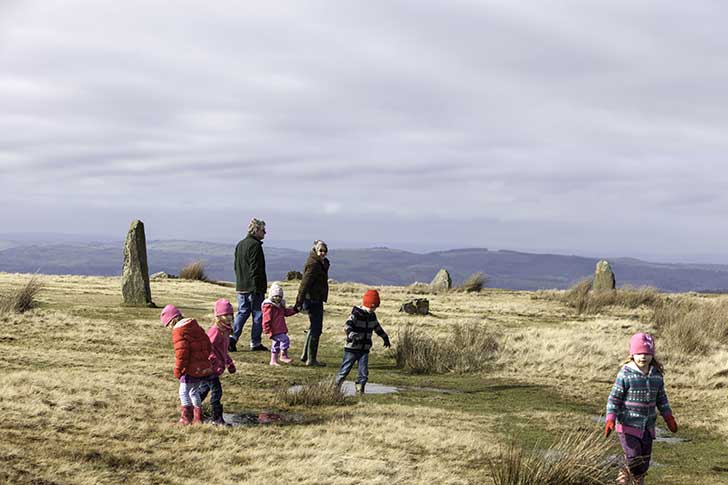
This Bronze Age circle close to the Welsh border may not have the most impressive stones, but it has an unrivalled setting.
Sited high on the dramatic moorland of Stapeley Hill, it commands spectacular views. It’s a great place for a ramble, or to watch the sun set over the Cambrian Mountains.
Erected over 3,000 years ago during the Bronze Age, this circle now has just 15 stones, but once may have had as many as 30. Today the stones form a rough circle, and the tallest would have been one of a pair forming an entrance.
Directions: small car park on an unclassified road off A488. Follow the track from the car park north-east over the brow of the hill for 300m. Accessible via a cattle grid via an uneven path.
6. Rollright Stones, Oxfordshire
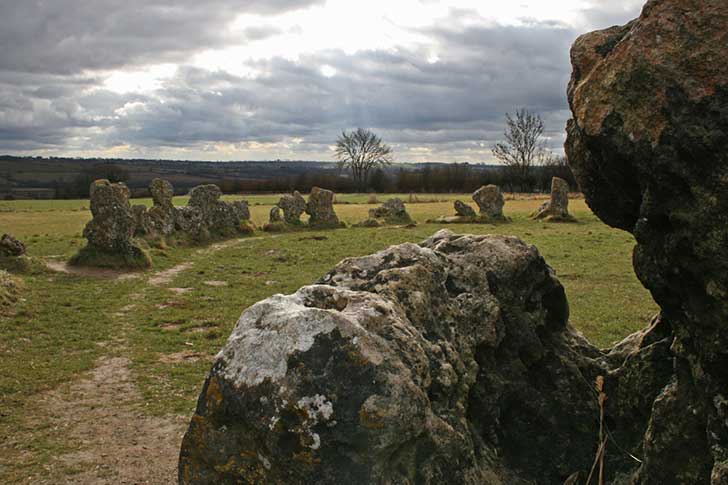
The three groups of stones collectively known as the Rollright Stones lie on either side of a road – once an ancient trackway – that forms the boundary between Oxfordshire and Warwickshire, on the edge of the Cotswolds.
Of the three monuments, the King’s Men stone circle is one of the most famous stone circles in Britain, as well as one of the best preserved. It’s also unusual in that stone circles are rarities in this part of England.
Built about 4,500 years ago, the near-perfect circle comprises about 70 standing stones, which are unusually closely packed. The Whispering Knights burial chamber, 350m east, and the solitary King Stone across the road date from different periods of prehistory.
Directions: small car park beside the road (pay £1 to park).
7. Duddo Five Stones, Northumberland
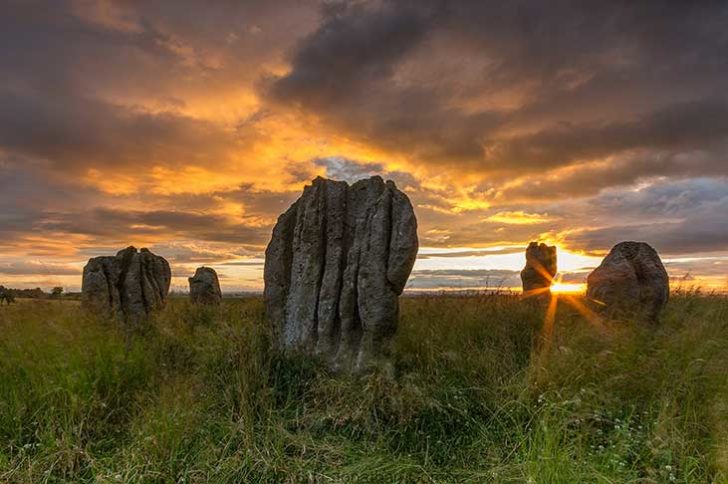
Northumberland’s answer to Stonehenge? Perhaps not quite, and there may only be five stones here (of an original six). But this charming little circle, only 5 miles (8 km) from the Scottish border, is worth the trek for its amazing hilltop setting, with great views of the Cheviot Hills to the south, the Lammermuir Hills to the north and the River Tweed to the west.
The circle, about 10m across, dates from the Bronze Age. Its huge stones, which vary in height from 1.5m to 2.3m, are quirkily shaped and have deep grooves – the result of thousands of years of erosion of the soft sandstone. They are said to be aligned with the winter solstice.
Directions: follow the signs and park on the verge near the gate, then take the permissive path through farmland for about 20 minutes.
Want to explore more of your local countryside? Check out the best stargazing spots in England, what you might find on a countryside walk in December, and celebrities’ favourite winter walks. CPRE members also get discounts on local attractions as well as bargains from outdoors shops. Become a member now.
